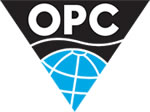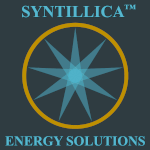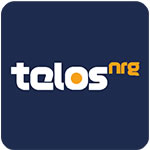Middle East / Africa
Country profile: Congo (Democratic Rep.)
| Location: | Central Africa, northeast of Angola ,0 |
| Climate: | tropical; hot and humid in equatorial river basin; cooler and drier in southern highlands; cooler and wetter in eastern highlands; north of Equator - wet season (April to October), dry season (December to February); south of Equator - wet season (November to March), dry season (April to October) |
| Terrain: | vast central basin is a low-lying plateau; mountains in east |
| Size: | 2345410 sq. km total (Land area: 2267600 sq. km Water area: 77810 sq.km) |
| Population: | 66,514,506 |
| Languages: | French (official), Lingala (a lingua franca trade language), Kingwana (a dialect of Kiswahili or Swahili), Kikongo, Tshiluba |
| Government: | republic |
| Capital city: | Kinshasa |
| Legal system: | a new constitution was adopted by referendum 18 December 2005; accepts compulsory ICJ jurisdiction, with reservations |
| Currency: | Congolese franc (CDF) |
| Licensing: |
Country profile
Congo started production in 1957 from the onshore Pointe Indienne field. In the 10 years between 1988 and 1998, the Congo's crude production almost doubled from 144,000 bpd to 265,000 bpd. Most of Congo's crude production is located offshore and is highly reliant on foreign personnel and technology. Elf and Agip are the largest and second largest concessionaires in the Congo respectively.
Energy production and consumption
| Oil | Gas | |
| Production: | NaN | NaN |
| Consumption: | NaN | NaN |
| Exports: | NaN | NaN |
| Imports: | NaN | NaN |
| Reserves: | NaN | NaN |
| Major fields: |
Congo (Democratic Rep.) - recent news
| 22 May 24 |
DRC: Perenco subsidiary MIOC undertakes active drilling campaign offshore DRC Muanda International Oil Company ('MIOC'), Perenco’s offshore DRC subsidiary, has announced that it has drilled two exploration wells to date in 2024, making the first exploration discovery offshore DRC in almost thirty years. The Nuada rig has now spud the first of twelve wells on the GCO field, as part of MIOC’s continuing development drilling campaign offshore DRC. |
| 21 Jul 22 |
Congo (DRC): Congo to offer 30 oil and gas blocks for licensing The Democratic Republic of Congo will offer 27 oil blocks and three gas blocks, nearly double as many as previously planned, in a licensing round next week, the hydrocarbons ministry has announced. |
| 27 Oct 21 |
Congo DR: INPEX sells interest in Offshore D. R. Congo Block to Perenco INPEX has sold all its shares in Teikoku Oil (D.R. Congo), a subsidiary, to Perenco Energies International, thereby divesting all its interests in the Offshore D. R. Congo Block. |
| 21 Jun 21 |
Congo (DRC): Congo ends oil production-sharing agreements with Israeli investor Gertler Democratic Republic of Congo has ended production-sharing agreements for Blocks 1 and 2 granted to Israeli investor Dan Gertler's Foxwhelp and Caprikat in 2010 for Blocks 1 and 2 near the Ugandan border. |
| 07 Apr 19 |
Congo (DRC): Democratic Republic of Congo plans oil licensing round this year Democratic Republic of Congo plans to launch a licensing round this year for more than 20 onshore oil and gas blocks, the oil ministry said on Friday, its first since adopting a new hydrocarbons code in 2015. |
Congo (Democratic Rep.) - more news
Other countries in this region
- Algeria,
- Angola,
- Bahrain,
- Benin,
- Botswana,
- Burundi,
- Cameroon,
- Central Africa Republic,
- Chad,
- Comoros,
- Congo (Brazzaville),
- Cote d'Ivoire,
- Djibouti,
- Egypt,
- Equatorial Guinea,
- Eritrea,
- Ethiopia,
- Gabon,
- Gambia,
- Ghana,
- Guinea (Republic),
- Guinea Bissau,
- Iran,
- Iraq,
- Israel,
- Jordan,
- Kenya,
- Kuwait,
- Lebanon,
- Liberia,
- Libya,
- Madagascar,
- Malawi,
- Mali,
- Mauritania,
- Mauritius,
- Morocco,
- Mozambique,
- Namibia,
- Niger,
- Nigeria,
- Oman,
- Palestine,
- Qatar,
- Rwanda,
- Sao Tome,
- Saudi Arabia,
- Senegal,
- Seychelles,
- Sierra Leone,
- Somalia,
- Somaliland,
- South Africa,
- South Sudan,
- Sudan,
- Syria,
- Tanzania,
- Togo,
- Tunisia,
- Uganda,
- United Arab Emirates,
- Western Sahara,
- Yemen,
- Zambia,
- Zanzibar,
- Zimbabwe


.gif)









